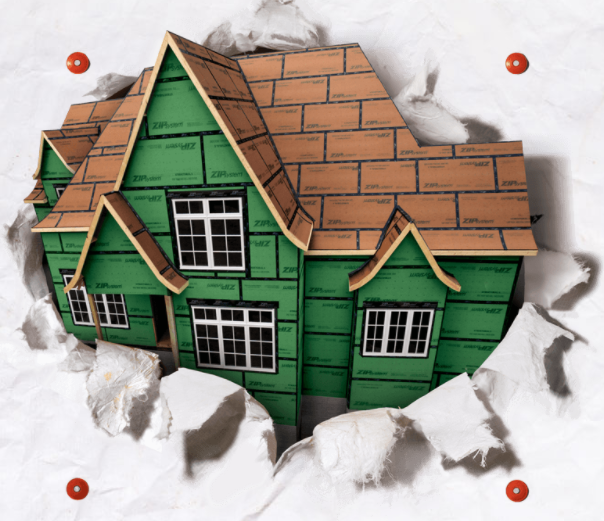
Building Science: An Evolution
3 Min Read June 7, 2017
Albert Einstein once said, “If you always do what you always did, you will always get what you always got.”
Perhaps the building industry took Einstein’s thought to heart, because builders have been using technological advances and sheer curiosity to bring innovations to the practice for centuries. Homebuilding design and engineering has undergone a significant evolution from 18th century mortise-and-tenon joints to today’s advanced wood framing, and much of that evolution is thanks to revolutionary products that simplified the process, allowing builders to focus on innovation.
Filling wall cavities with insulation grew out of desire for greater indoor comfort. This practice led to the examination of control layers in the building enclosure and the prioritization of those layers directly following structural and fire safety ratings.
“When we were building out of 1,000-year-old trees and rocks with no insulation, we had to heat them, and energy flow was massive. Repeated wetting followed by drying was not a problem,” said Joe Lstiburek of Building Science Corporation at a 2017 Huber Engineered Wood (HEW) press breakfast. “Buildings dried out in winter and dried inward in the summertime. The more thermal insulation that you add, the lower the drying potential, so suddenly, we had to deal with water and air control, which was a fundamental change.”
The industry began paying more attention to the control layers and learning the order of importance — water, air, vapor and thermal management. Only in recent history did it become standard practice to include a water barrier as part of the wall system.
“We didn’t really care about water or air control layers until we ended up with highly insulated buildings. The big change is that water management, directly followed by air management, is now the focus,” Lstiburek added.
Recognizing a growing desire among builders to focus on control layers, HEW set out to develop an exterior roof and wall system that would solve the modern challenges of water and air management while making the installation process more efficient.
“Prior to launching a new product, we had to learn about the control layers ourselves and determine how to manage or mitigate the potential for water intrusion and the infiltration and exfiltration of air,” said Kurt Koch, vice president engineering and innovation for HEW. “We observed practices in the field and consulted with experts so that we could develop a system that would revolutionize wood frame construction.”
That revolutionary product, ZIP System® sheathing and tape, ended up seamlessly integrating structural requirements of sheathing with a built-in water- and air-resistive barrier. Originally adopted by progressive builders (think today’s Passive House builders), ZIP System sheathing and tape is now used by a widespread audience from production and custom home builders to multifamily, mixed-use and remodeling specialists.
“ZIP System sheathing and tape addresses a greater move toward water resistance and air tightness,” Koch said. “It’s intuitive when you look at our system.”
To learn more about how ZIP System® sheathing and tape is revolutionizing the construction process for builders, visit ZIPRevolution.com.

